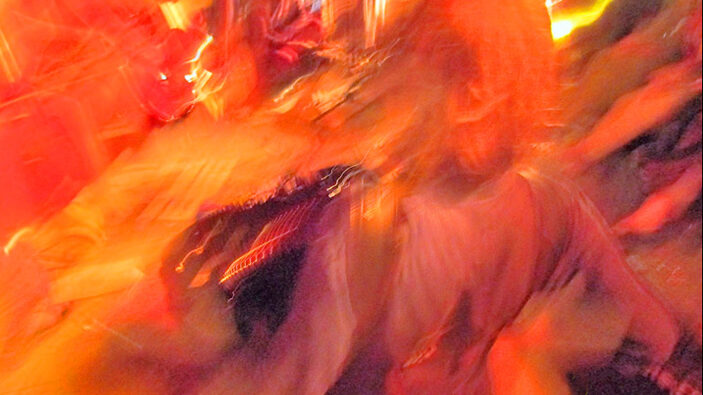Location; Topsail Hill State Park; in the Florida Panhandle. They call this area, occupying the north coast of the Gulf of Mexico, the ‘FORGOTTEN COAST.” It is overdeveloped, under planned and overpopulated containing the usual big-box clones and too many people. But this state park is an oasis amidst this growth. It is toward the end of January, bleak, cloudy and low 50’s Fahrenheit. Our motor home is in place, set up in this lovely state park boasting full hookups and grassy, roomy sites on what had formerly been a privately owned campground. Paul and I set off on a hike beginning on the beach, a delightful activity we find, even in cool and stormy weather.
The dunes hugging the beach are protected by boardwalks for crossing to the beach and a continuous array of signs begging you to stay “OFF THE DUNES.” The sand in this region is quite fine and appears to glow in an off-shade of white, enhanced by the pewter clouds and dark green ocean. The waves rolled in on a symphony of sound, a background for the few seabirds; pelicans, sandpipers and gulls. The campground’s tri-fold brochure listed this hike as measuring 1.2 miles to the next beach access point where we would turn inland to continue our 5.5 mile hike around Campbell Lake and back to the campgsite.
Our walk was set at a brisk pace to offset the time spent sitting and traveling from the eastern campground on Mexico Beach, Florida. Eventually we could make out people in the distance at what we assumed would be this access point. Before us lay the glowing sandy beach, the abundant waves on our left, the lonely sand dunes on the right and clouds and a bit of drizzle overhead. We were alone for now. As we approached the access point, we could make out two figures and a line up of 4 slender and tall fishing poles “growing” out of the sand near the edge of the shore. A woman was sitting on a folding chair, bundled up against the wind surrounded by fishing gear, a cooler and reading a book. Her husband was clad in camouflage-patterned fishing overalls, boots and rainwear. He was approaching and receding from the shore with a rectangular basket attached to a long pole.
I was curious, of course. I approached him and asked what he was catching in the basket. He responded, “sand fleas, or at least that is what I am hoping to catch. In this weather, they are not very abundant.” “Sand fleas,” I asked? “I thought they were tiny, similar to “no-seeums” and they jumped away from your feet as you disturbed the sand.”
“Well,” he replied, “they are also called something like Sand Moles, and yes,” replying to my further query, “they make good bait for redfish.” Come I will show you some fleas.” We walked to his wife’s chair where he opened the cooler and pulled out a Tupperware type container. He placed 5 “fleas” in his hand and explained as he showed us that these were frozen from a more successful day of catching them in his basket.

He had caught a redfish that day but had to throw it back because it was too large to legally keep—more than 36”. That seemed to me to be a big fish to be caught so close to shore. Apparently they are very common in this area. He was still hoping to catch some Pompano or other fish for tonight’s dinner.
We wished him luck and made our way back over the dunes to continue the hike. I later “Googled” sand fleas and found out that they are called Mole Crabs and I have included a photo of the frozen ones in his hand as well as the fisherman and his basket. You never know what you may learn when you set out. Every step can be an adventure. By the way, we did not meet another person until we returned to our campsite and greeted our neighbors, but that is a whole other story. Happy fishing.

Ann Carol Goldberg
Message in a Minute
